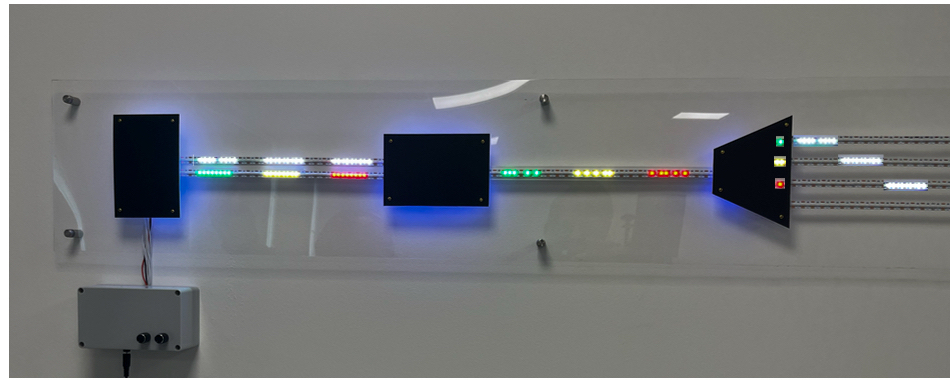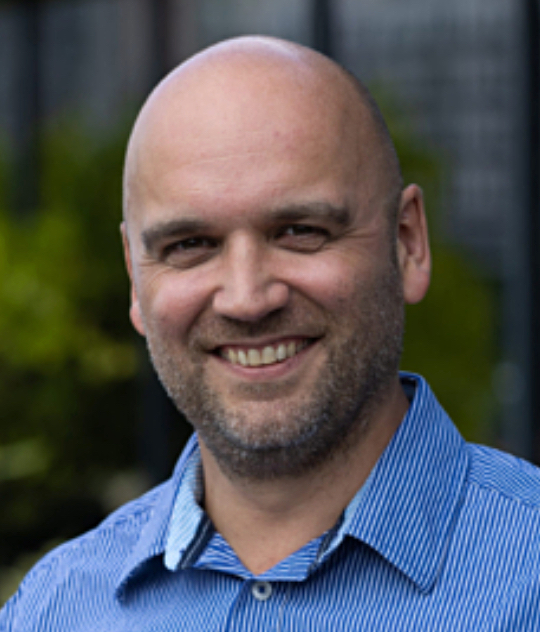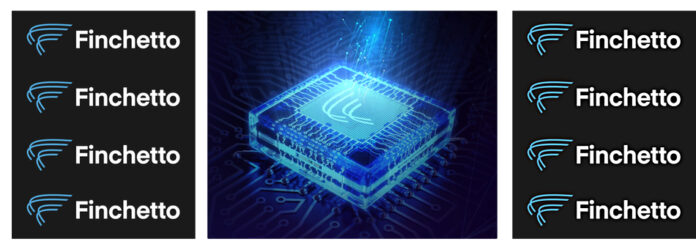The fundamental problem of an optical packet switch is that light cannot be stored. A light beam carrying a data packet cannot be stored and then sent on its way. That makes reading header information in a light-carried data packet near-impossible.
Hold this thought as we resume our look at photonics chip startup Finchetto. We exited the first part of this look at Finchetto with it building a photonic switch promising to be much faster than a digital (electronic) packet switch.
At a simplistic level, a digital packet switch has a number of input ports and a number of output ports. Its job is to receive an input packet and send it out on the correct output port. So let’s say this is an Ethernet switch and a data packet comes in on an inbound port which terminates an Ethernet cable. It is composed of a header section and a data payload; all sequences of bits. The header contains packet destination addressing information. The switch receives the incoming packet and writes it to a buffer memory store. It then locates and extracts the header information and identifies the destination address. This is mapped to an output port. The data packet is then routed to that port and sent on its way along the port’s Ethernet cable.
The problem with the same data packet being carried along an optical cable is that when it comes in you can’t store the light signal’s data packet as light. You can store its bits in DRAM but then you are in the digital electronics domain, the slower electronics domain, and have exited the photonics world.

What Finchetto’s co-founder, Mike Pearcey, realized was that, as the light beam carrying the data payload and header would have a specific wavelength, aka color, you could, at its origin point, transmit light in a different wavelength at exactly the same time, and this color could represent the packet’s destination, an optical control signal. So two packets arrive simultaneously at the optical packet switch; a data payload and a header, carried on two separate colors, say 1550nm and 1551nm. The switch is set up so that it will route the data payload to the output port identified by the 1551nm color. The wavelength is specific to the destination for a data packet.
Because light doesn’t stop, the speed increase can be significant.
CEO Mark Rushworth said: “We’ve eliminated the electrical control signal, the rate limiter on how granular you can get your switching in the circuit switches. We’re talking tens of microseconds, reconfiguration time, others are looking at less than a microsecond reconfiguration time, but that’s not fast enough to do a hundred gig network even, which is fairly low small fry these days. By eliminating that electronic control signal that says; switch this way, switch that way; that’s taking tens of microseconds or hundreds of nanoseconds and replacing it with light controlling lights, we’ve reduced that switching time to low nanoseconds.”
A demo set up at Finchetto’s office shows the effect;

The leftmost black unit is the optical packet switch input point, receiving data and header signals from an input port. These are sent in sequence and in parallel to a non-linear and frequency-mixing photonic processor. There are white data packets on the upper optical cable and green, yellow and red color header information, synchronized with the correct data packets, on the lower cable. The two sets of signals arrive in sequence at the switch’s processor and it sends them onwards to the output port demultiplexer complex (right hand black truncated triangle shape) which routes them out through the correct port.
Rushworth said the processing part of the switch: “is actually taking those two parallel wavelengths and it is transposing the data onto the addressed wavelength. So only one wavelength comes out … on the destination wavelength, and then you have demultiplexer would send them out. Then you can physically get the data to the correct destination based on what wavelength it is on.”
This optical packet switch is agnostic to data carrying protocols. Rushworth says: “The packet remains integral as an Ethernet packet or Infiniband packet. Whatever protocol you’re using stays so that it can be understood at each end without any issues. We keep the same protocol that the system has.”
It’s also agnostic to data signalling speed. He said:”The interesting thing about the switch is, because it’s all optical, what that means is that it’s future-proof to future network speeds. So at the moment, cutting edge is 800 gigabits per second. They’re pushing on 1.6 terabyte per second. In two, three years it’ll be 3.2 TBps and so on. But because the switch is passive optics, it doesn’t matter what speed the signal comes in, because whatever the speed, we’ll pass it through.”
He said the timing synchronization is no problem because “the time domain for the data is so coarse in comparison to the time domain of the light.”
There is one additional aspect here. Rushworth says that: “In a high performance compute cluster, you might decide that you have different elephant flows and mice flows. Basically you’ll have clusters of packets that need to go to certain places. So you might not switch every packet.”
“A Cisco switch as it stands at the moment, has to, by definition, decode every packet to see where that data’s going to go, even if 20 packets in a row are going to the same place. That’s what it does. It reads the headers and so on. But in our case, what you can do is cluster those packets together and have session-based switching, as we call it.”
Finchetto has to build the photonic switch but also build an interface module which would be a custom NIC that is taking the digital data from the GPU, the CPU, and creating the packets and then spitting out the light in the particular way needed.
There is additional work to be done: ”You’ve got the switch product, but then, in order to make it work in a network, you’ve obviously got to have control plane and firmware and software at various levels. So we’re building a full solution, a full product solution to deliver that future network.”

Overall, Rushworth told us: “The bit that we need to demonstrate is that this, in the context of a network, can be demonstrated to be more performant than existing digital switches.”
“And there’s a few additional things, technical challenges that we need to solve. Flow control, for example. We now have an unblocked network, but what happens if 49,000 servers are all sending to one destination? How do you deal with that? Light doesn’t stop for anybody. So you don’t have that buffer, you don’t have that memory. What do you do about it? We’ve got a whole series of proprietary clever management techniques and overlay that makes it work as a network, which I can’t go into.”
Rushworth said Finchetto has discussed its concepts with customers and suppliers in players in the market: “They’ve come back and said, okay, these are the challenges we want to see you meet as a startup. So we’re building towards that. We have an active conversation with some big players. We’re very close to some of the OEMs that are building switches already. There’s an external demo upcoming, which will be answering those questions raised by the homework that we’ve been given by the market.”
He said: “We’ve demonstrated the bits, but now we need to zoom out and demonstrate the system. That’s the focus at the moment. And in terms of when we would have something that would be considered a product, something that you could put into customer’s laboratories, we anticipate 12 to 18 months away.”
“That is to show pilots and proof of concept and really demonstrate it within the customer environment. Now a lot can happen and there’s a lot of different routes that you can take at that point, whether it’s co-development with a partner or whether it’s self-development.”
It’s very early days here. You can check out a Finchetto patent here to get a more detailed look at its ideas. The concept of a passive optical photonics switch is fascinating. The upcoming demonstration will be a vital hurdle for the company to overcome and then, if it greenlights further development, will involve semiconductor level work.
Finchetto is already involved with this aspect of the development. Rushworth again: “We’ve partnered with a foundry in Switzerland called CSEM. In collaboration with them, we’ve been doing chip-based development work primarily on the device level. Photonics is light generation, manipulation, and detection. It’s that manipulation bit where we sit. Other people could do the transceiver creation and detection. The clever bit we do is the light controlling light and that’s in the manipulation. That’s the work that we’ve been doing in collaboration with CSEM and we’re out at the moment with a job for an integrated optics engineer to increasingly bring that in-house.”
Stay tuned. We’ll keep an eye on Finchetto’s progress and see how things develop.








